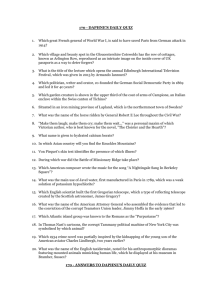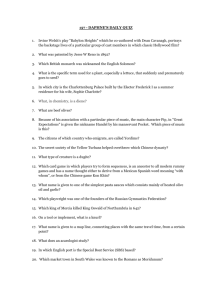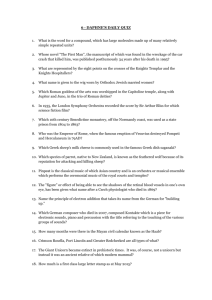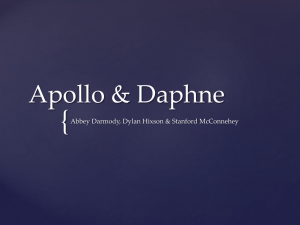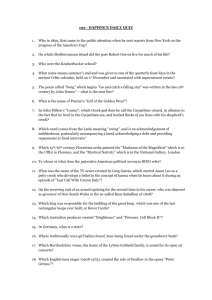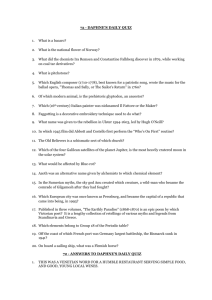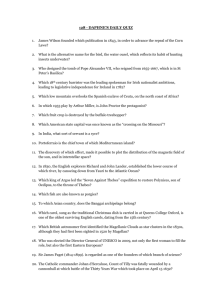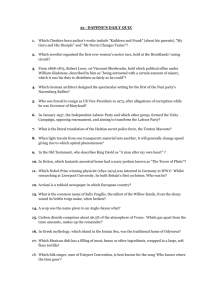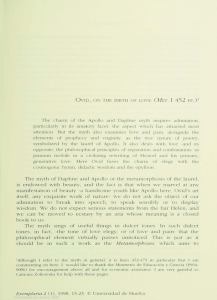Phoebus et Daphnē
advertisement
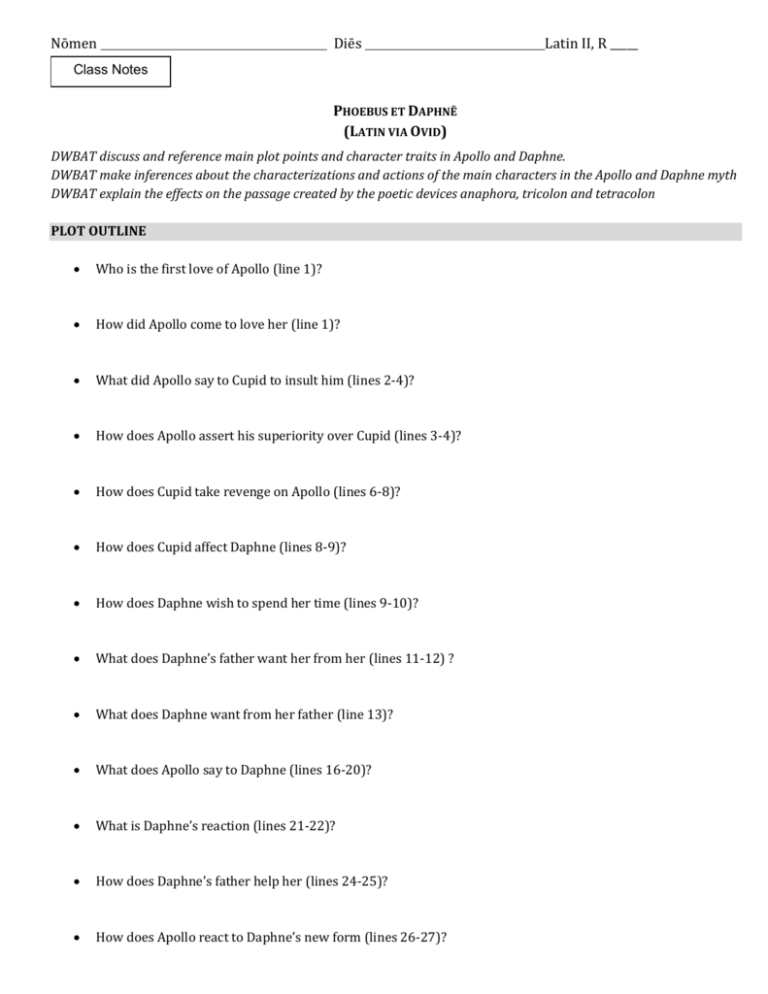
Nōmen Diēs Latin II, R _____ Class Notes PHOEBUS ET DAPHNĒ (LATIN VIA OVID) DWBAT discuss and reference main plot points and character traits in Apollo and Daphne. DWBAT make inferences about the characterizations and actions of the main characters in the Apollo and Daphne myth DWBAT explain the effects on the passage created by the poetic devices anaphora, tricolon and tetracolon PLOT OUTLINE Who is the first love of Apollo (line 1)? How did Apollo come to love her (line 1)? What did Apollo say to Cupid to insult him (lines 2-4)? How does Apollo assert his superiority over Cupid (lines 3-4)? How does Cupid take revenge on Apollo (lines 6-8)? How does Cupid affect Daphne (lines 8-9)? How does Daphne wish to spend her time (lines 9-10)? What does Daphne’s father want her from her (lines 11-12) ? What does Daphne want from her father (line 13)? What does Apollo say to Daphne (lines 16-20)? What is Daphne’s reaction (lines 21-22)? How does Daphne’s father help her (lines 24-25)? How does Apollo react to Daphne’s new form (lines 26-27)? CHARACTER TRAITS Directions: Fill in at least 2 personality traits for each character, and cite Latin evidence (write out the Latin) to justify each answer. Character TRAIT APOLLO CUPID DAPHNE DAPHNE’S FATHER LATIN EVIDENCE CONTEXT QUESTIONS 1. What is the first word used to describe Cupid in this passage? What is the first word used to describe Apollo? 2. How does Apollo justify to Cupid that “sagittae sunt meae” (lines 3)? 3. Cupid pierces Daphne with an arrow, and pierces Apollo with another arrow. Describe the two ways in which the arrow that pierces Daphne is different than the arrow that pierces Apollo (lines 6-9). 4. What does Daphne’s father promise her and why is that a promise that’s difficult to keep (lines 13-15)? 5. What does Apollo praise about Daphne in lines 16-17? What does this illustrate about the kind of feeling Apollo has for Daphne? 6. Why does Apollo tell Daphne he is the deus sōlis, mūsicae, medicīnae, artium in line 20? IDIOMATIC and POETIC EXPRESSIONS Directions: Write the literal-grammar translation for each phrase; then, in parentheses, write the best English colloquial translation. 1. “īra Cupīdinis Phoebō amōrem dedit” (line 1) LITERAL: The anger of Cupid gave love to Apollo. COLLOQUIAL: Angry Cupid made Apollo fall in love. 2. Quid est tibi? (line 2) LITERAL: COLLOQUIAL: 3. Daphne nōmen amōris fugitat” (line 9) LITERAL: COLLOQUIAL: 4. flammae amōris in deō crescunt (line 15) LITERAL: COLLOQUIAL: 5. sī potentiam habēs... (line 25) LITERAL: COLLOQUIAL: POETIC DEVICES 7. Repeating the same word in close proximity is called anaphora. What is the effect does Daphne’s father use of anaphora, by repeating “saepe” and “dēbēs” in lines 11-12, create in the text? 8. Apollo praises Daphne’s “caput, capillōs, oculōs”. Listing off 3 items without a conjunction is called a tricolon. What is the effect created by this tricolon? 9. Apollo lists to Daphne that he is the god of “sōlis, mūsicae, medicīnae, artium”. Listing off 4 items without a conjunction is called a tetracolon. What is the effect created by this tetracolon? CHECK: ________
